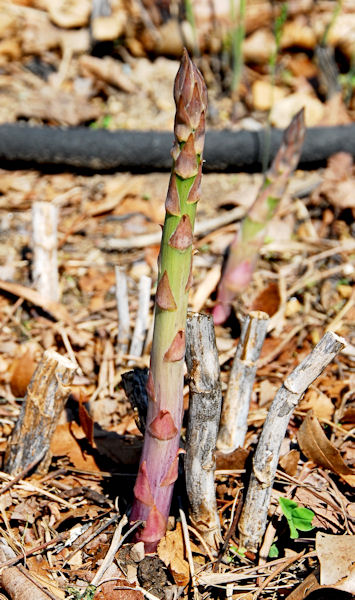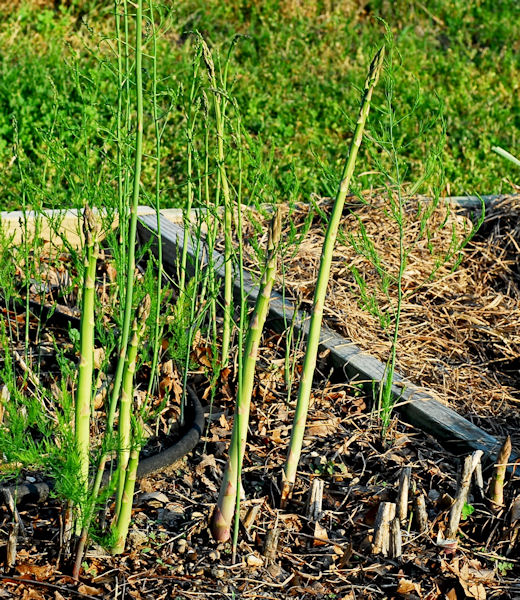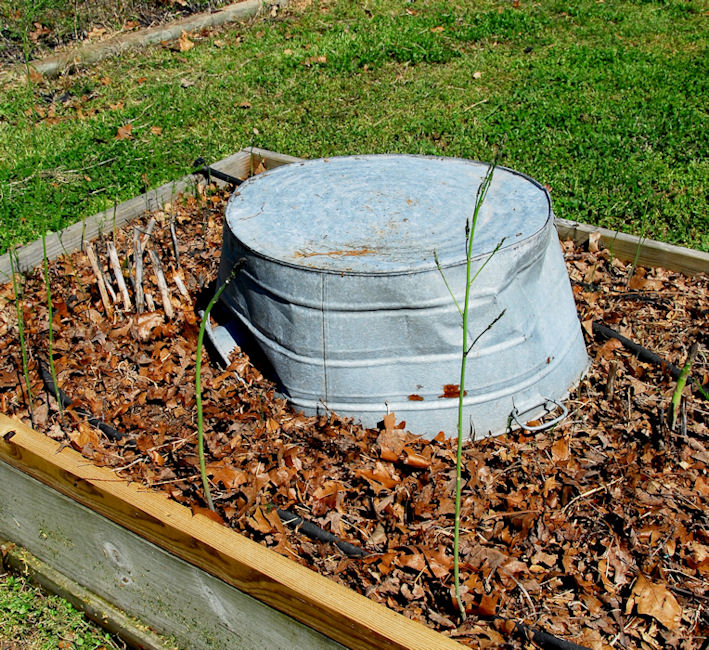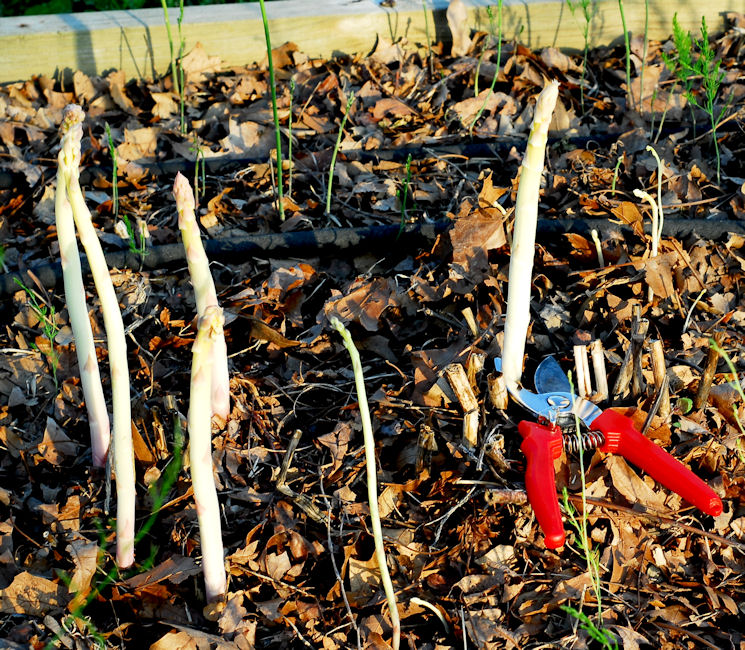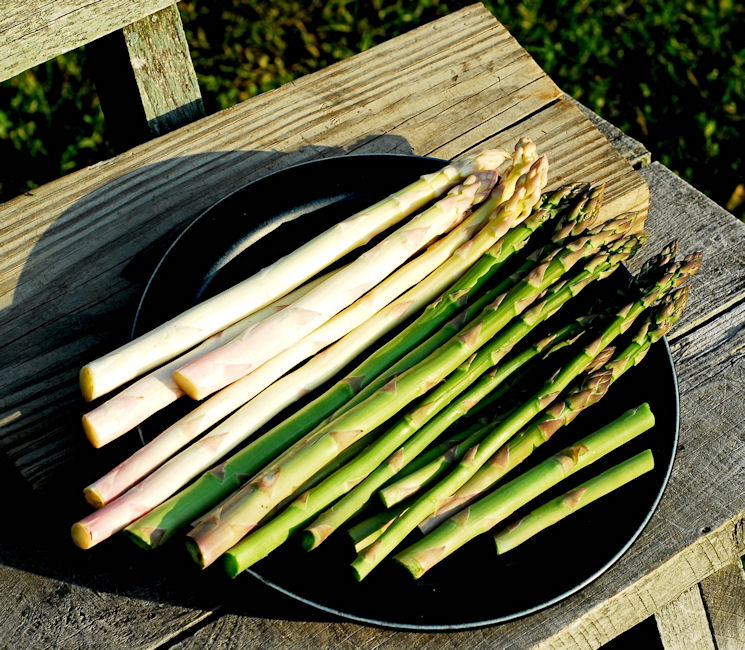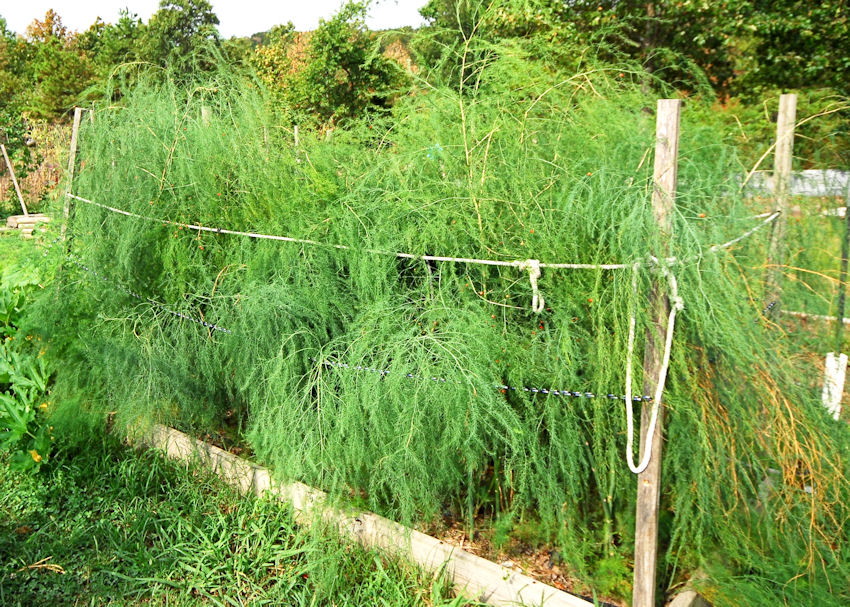Gardening
Related: About this forumHarvesting Asparagus.... It just seems so WRONG!
(YAY Asparagus!!!
I started to write a new post celebrating the harvesting of our first Asparagus this week,
but went back and looked at this one, and....hey, it works. The photos look just the same.
The Asparagus is about 3 weeks later than last year, but just as tasty,
and what could be easier? It pops up every year, very little maintenance, no pest problems here so far, and melt in your mouth tender delicious.
Tonight, we are having it with Grilled Fresh Salmon. Great taste companions.)
The first edible that pops up out of the ground on our place announcing the advent of SPRING is Asparagus!
"HI!! I Bring Good News! Its SPRING!! Winter is OVER!!! "
...and the first thing we do this this early Bringer of the Good News is cut it off at the ground.
(and steam it, and eat it with moans of delight)
It just seems SO wrong.
Everything else in our Garden, upon showing signs of life after the dark of Winter is nurtured,
cared for with tenderness, fertilized, weeded, and visited daily with loving appreciation.
Days, sometimes weeks will pass in agonized anticipation of a Tomato or a Strawberry reaching that perfect ripeness before it is harvested...
...but NOT Asparagus.
As soon as it pops UP, Off With Its Head!
(The thin ones are seedlings from last year's seeds that dropped in the bed.
The thicker ones should have been cut yesterday.
The shorter brown stubs are the stalks from last year's standing crop that were cut off last Fall.)
If immediate decapitation is not bad enough,
it can get even more brutal.
Hey. Lets cover up the babies so they can't get any light!!!
Light Deprivation produces White Asparagus
that is even more tender.
YUM!
We love this stuff so much that we added another variety, and two more beds this year.
Asparagus is one of the very few Perennial vegetables.
A well maintained bed will produce for many years.
Our original bed is 4 years old, and producing beyond our expectations.
It has been trouble free, with no pests, diseases, or any special needs.
(There is an Asparagus Beetle, but we haven't seen one here yet.)
After harvesting (4 - 6 weeks in a mature bed),
the stalks are left standing for the rest of the Summer,
and cut off at ground level when they turn brown in the Fall.
Asparagus Beds are self-weeding for the most part because the plants grow so tall & thick that weeds don't really have a chance. After the Spring Harvest, we just give it a little water if we don't get any rain, and just watch it grow.
This is a beautiful plant, very lacy and ethereal.
It grows very tall, over 6', so I suggest locating it along the fence.
Asparagus has been the most trouble free/ low maintenance crop we have grown here,
and the taste and tenderness of fresh cut Asparagus is better than anything that can be bought in a market,
or ordered in a high end restaurant.
We prefer our lightly steamed with a little butter.
![]()
sinkingfeeling
(56,956 posts)bvar22
(39,909 posts)We look forward to our first Asparagus with much anticipation and excitement.
Kneeling down and lightly scratching the surface of the Asparagus beds with twigs, carefully looking for the snouts of the first spears becomes a daily shared experience in the Spring around here.
How horrible to see the first spears, and then have them yanked away by a freeze.
Here in Central Arkansas, we can have late April freezes, locally named the "BlackBerry Frost",
that can damage the possibility of harvest from the early blooming fruit trees and berries.
The Locals caution us against putting out tomatoes and other fragile crops until after The Blackberry Frost, but we haven't that frost over the last few years. (The New Normal?)
Hopefully, your beds will recover.
If your beds are mature enough, you might even be able to take some spears.
Asparagus CAN be covered to protect the spears against frosts.
You can leave the early spears covered for days without damage.
Our temps are forecast to drop this weekend, but short of frost.
If we even suspect frost, we will harvest what we can, and then bury the rest in leaves, burlap sacks, and tubs & buckets.
Up North, where we come from (Minnesota), Asparagus is left covered by layers of heavy mulch and sacking. White Asparagus was the norm in Minnesota.
Good luck with your Asparagus.
sinkingfeeling
(56,956 posts)froze. I've got some more out now, but it's to drop to 30 tomorrow night! I will cover them with sheets and stuff. My bed is only 2 years old, so haven't cut any to eat yet.
japple
(10,459 posts)but enough for us to enjoy a large batch every Sunday until June. We need to get more crowns and plant them to rejuvenate our beds.
I usually just roast mine in the oven with a bit of olive oil, salt & pepper. Orgasmic!
bvar22
(39,909 posts)By far, it is the easiest, lowest maintenance crop we grow,
and FRESH, just cut, home grown Asparagus is To Die For,
much, much better than any we have ever bought in any Farmers Market,
or ordered in any High End Restaurant.
We have heard rumors of wild Asparagus,
especially around old homesteads and farms,
and are keeping our eyes open now that we know what to look for.
japple
(10,459 posts)Most of it is along fence lines, power lines and beneath trees. My niece found a wild stalk the other day that was almost 1" in diameter, yet it snapped right off when she broke it. I'm saving it for next Sunday dinner. We might feed the whole family off of that one stalk! Seriously, I'll probably slice it into half inch pieces and saute it with leeks.
